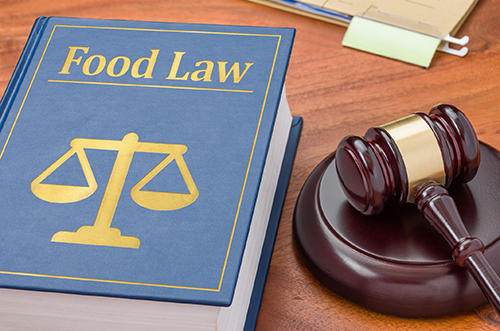Food labeling is a growing concern for millions on a global level. It tells us the nutritional content, ingredients that may be harmful, like allergens, and other important info such as whether an item is halal, kosher, or heart healthy. Consumers are also increasingly confused by value-added labels, such as non-GMO, organic, and free-range. Food label laws are barely keeping up with consumer’s needs, but here’s what you need to know when it comes to dietary restrictions.
At thrive! it’s important consumers and professionals both understand what these labels mean, but the meetings and events industry, HR professionals, caterers, and chefs need to be especially careful we understand how to label menus, banquets, and food stations. Here’s the latest about food labels so we can ensure we meet our duty of care, compliance, and food safety standards.
An Update on Understanding Food Label Laws
Nutrition has always been a reason for labeling laws, but as food safety becomes a growing concern, there have been important changes over the years. Labels need to be easier to read, written in plain language, and more accurate than ever.
This push for accuracy and honesty, especially as it relates to food allergens, came about in 1999 when foods were randomly selected for testing by the FDA, and a whopping 25% of them tested positive for peanuts and eggs, even though the label did not disclose those allergens were present.
The Food Allergen Labeling and Consumer Protection Act (FALCPA) of 2004 applies to foods regulated by the Food and Drug Administration (FDA). The FDA regulates just about everything with exception of poultry, most meat, some egg products, and most alcohol. Those are regulated by other federal agencies.
FALCPA requires that food labels clearly identify ingredients containing any of the major allergens or containing any protein derived from a major food allergen. It isn’t a perfect system, because it leaves a lot of people with food allergies and food intolerances out of the conversation, but it does help anyone with an allergy to one of the major allergens.
There are more than 170 recognized foods that cause allergic reactions. In fact, a person can develop an allergy to absolutely anything. There are people allergic to sunlight, water, trace chemicals that might be contained in the pesticides used on our foods. Those 170 recognized foods are the ones the government sees as causing a reaction often enough to be named. However, there are eight specific allergens that cause 90 percent of all food-based allergic reactions in the United States. Currently, there is a bill in place to add sesame to the list.
The Major Food Allergens
The eight food allergens that cause 90% of all food-based allergic reactions are:
- Milk
- Eggs
- Fish (e.g., bass, flounder, cod)
- Crustacean shellfish (e.g., crab, lobster, shrimp)
- Tree nuts (e.g., almonds, walnuts, pecans)
- Peanuts
- Wheat
- Soybeans
These foods and anything containing protein derived from one or more of them must be labeled because they are designated as “major food allergens” by FALCPA.
To make the presence of these major allergens clear, labels must list the food source of the ingredients in one of two ways:
- The allergen or derivative must be in parentheses after the name of the ingredient. For example, when you see the ingredient, whey followed by (milk).
- The allergen must be listed immediately after or next to the list of ingredients. For example, when you see the phrase, “contains wheat, soy, milk.”
Label Food, Not People
This is a theme I’m promoting in response to the increasing public awareness that those with dietary restrictions, adult and children, are being bullied. It is being discussed more openly and those who make fun of or endanger people with food allergies. A growing number of people are realizing that ignoring dietary restrictions is doing harm, potentially threatening the health and safety of consumers, is against the law, and doesn’t provide an inclusive environment for participation and the value of attendees, employees, students, and more.
While this covers FALCPA, we’ll be continuing to cover food label laws and other labeling topics more in the coming months. Please feel free to join the conversation. Comment below, or tag me on Twitter with your ideas and experiences. I would love to hear from you.



